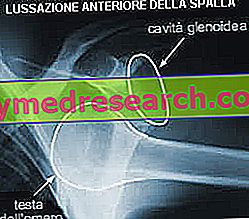Definition and Examples of Lantibiotics
The term lantibiotics means antibacterial substances synthesized by particular lactic bacteria. These microorganisms produce antibiotics to prevent pathogens from settling in the same environment and to subtract their nourishment.
In the past, broad-spectrum antibiotics have been studied and researched, therefore active towards all bacterial species. However, this type of intervention has favored the development of resistant bacterial strains. Here then is that the consociation of an antibiotic with an antibacterial enhances the effect of the latter and favors a more rapid restoration of intestinal functions.
Lactic acid bacteria are able to produce a broad spectrum of proteins and peptides that possess antimicrobial activity. The structure of these peptides varies between the essentially linear one, for example of bacteriocins, to the complex one of peptides, which can contain various rings through the formation of bridges with residues of lanthionine (Lan) or b-methylanthine (Me-Lan).
These bacteriocins take the name of LANTIBIOTICI and present themselves as an interesting addition to "conventional" antimicrobials in a period in which resistance to antibiotics compromises their use.
In 1991 the group of lantibiotics was divided into two subgroups:
Type A: elongated and flexible molecules, positively charged. They appear to act by depolarizing the cytoplasmic membrane, thus favoring the formation of pores with loss of essential constituents of the antagonist bacterial cell. Example of such lantibiotics: nisin.
Type B: they are represented by molecules with a globular structure, negatively charged or electrically neutral. They interfere with the enzymatic reactions essential for the growth and survival of the target bacterium.
Type B antibiotics include mersacidin and actagardine.
Application of lantibiotics
Some characteristics of lantibiotics make these compounds particularly interesting for their potential applications both in the food sector and in the biomedical sector. Many of these peptides have a broad spectrum of activity and are relatively thermostable and resistant to proteolysis.
Lantibiotics can be added to foods in various ways:
1) a producer of lantibiotics can be used as colturastarter or added to a fermented food.
2) a producer strain could be used as a protective crop on the surface of a food, to protect it from temperature changes induced by the growth of unwanted bacteria. They can therefore increase the shelf-life of the food, ie its storage time.
3) the lantibiotic can be added as a purified or concentrated compound; for example nisin (E234) is still used in melted and spreadable cheeses, pasteurized desserts, milk.



